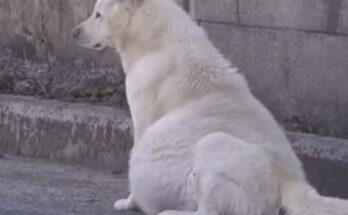For more than two decades, the mystery of the missing graduating class of 1999 from a small high school in northern California haunted their families, tormented their community, and puzzled law enforcement. On what should have been the happiest trip of their young lives — a celebratory excursion into the Oregon wilderness — they vanished. Without a trace. No bodies. No evidence. No answers.
Until now.
Last week, a trained K-9 named Shadow, part of a specialized search-and-recovery team working in the dense terrain of Oregon’s Rogue River-Siskiyou National Forest, led investigators to a discovery that would reopen one of America’s most disturbing cold cases — and shock the world.
Hidden beneath layers of moss, vines, and decades of overgrowth, Shadow alerted to something metal and foreign. As the team hacked away the brush, a rusted, graffiti-covered shell emerged from the forest floor: an old, decaying school bus. Faded yellow paint. Broken windows. Trees growing up through the undercarriage.

But what was inside would haunt even the most seasoned investigators.
The Bus in the Forest
The bus was confirmed to be the same vehicle that carried 27 seniors from Del Rio High School on the morning of June 15, 1999. The last confirmed sighting had been at a gas station near Medford, Oregon — where security footage showed the students laughing, stocking up on snacks, and posing for photos. No distress. No signs of trouble.
After that, they simply… disappeared.
Many speculated foul play, others blamed the treacherous terrain, and conspiracy theories quickly sprouted. Everything from cults to alien abduction became part of the narrative. With no evidence and no leads, the case was declared inactive by 2005. It had faded into local legend — a tragic story parents told their children to warn them about straying too far on camping trips.
But now, that legend has become terrifyingly real.
Inside the Bus
When the team forced open the corroded emergency exit, the musty air that poured out was suffocating. The first thing they saw were rows of decaying backpacks, schoolbooks, and personal items left untouched — as if frozen in time.
Then, Shadow led them further inside, toward the back of the bus.
There, investigators found the skeletal remains of seven individuals — huddled together, some with arms around each other, others in positions of apparent prayer. The chilling positioning of the bodies suggested they were aware of their imminent end.
Forensics experts confirmed that all seven remains belonged to students from the missing class. Some items, like a class ring and a yearbook signed by classmates, helped with the initial identification. But where were the other 20?
Outside the bus, shallow depressions in the earth hinted at further grave sites.

By the following morning, four more remains had been unearthed, scattered and partially covered — as if buried in a hurry or by someone unfamiliar with the land. Several feet away, Shadow once again began barking and digging furiously near the base of a twisted fir tree.
There, beneath a tangle of roots and leaves, investigators made their most disturbing discovery yet.
A Journal in a Ziploc Bag
Wrapped in plastic, a water-damaged journal belonging to one of the students — Emily Tran — had somehow survived the elements. Her final entries, dated June 17 and 18, 1999, revealed the horrifying truth.
According to Emily, the class had taken a wrong turn while exploring an off-the-map trail. After the bus broke down deep in the forest, attempts to hike out failed. They were disoriented, possibly drugged, and repeatedly stalked by a “man in the woods.” Emily described hearing sounds at night, missing classmates, and finding symbols carved into trees around the bus.
Her final entry simply read:
“If anyone finds this… we’re not alone out here. He’s watching us. Please, tell our families we tried.”
The page was smudged. There were signs of tearing, as if someone had tried to rip out earlier entries.
And then came the biggest twist of all.
New Footprints. Fresh Clues.
During the forensic sweep of the area, investigators found a series of fresh boot prints — too recent to belong to any 1999 search team. Alongside them were cigarette butts, snack wrappers, and a crude shelter made from tarp and brush, about 200 yards from the bus.
Could someone still be living out there?
Could the mysterious “man in the woods” be real — and still alive?
Local authorities have sealed off the area and enlisted additional support from federal agencies. Drones, scent-tracking K-9s, and heat-detection equipment are now being deployed in the surrounding forest.

And one final, heartbreaking development has emerged: one of the students — 18-year-old Jason Bell — was never confirmed dead. His remains have not been found, and in a photo recovered from a damaged disposable camera inside the bus, he is seen standing near the tree line… watching the group from a distance, face partially blurred, eyes shadowed.
Some speculate he may have survived. Others fear something darker: that he may have become part of what hunted them.
A Nation Haunted Once More
The rediscovery of the Del Rio Class of 1999 has reopened old wounds — and raised chilling new questions.
Who — or what — was in the woods with them?
Why did no one find the bus sooner?
And most disturbingly: are we truly alone in the places we think we know?
As investigators continue to unravel this tragic mystery, one thing is certain — the legend is no longer a myth.
The Class of ’99 has spoken. And the forest is listening.


